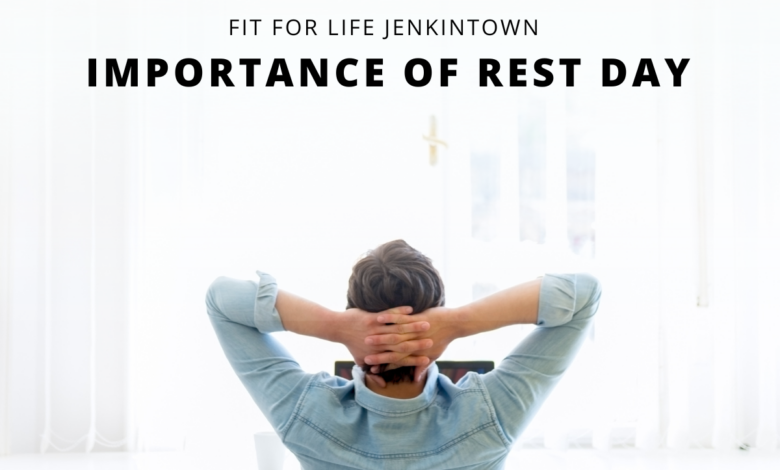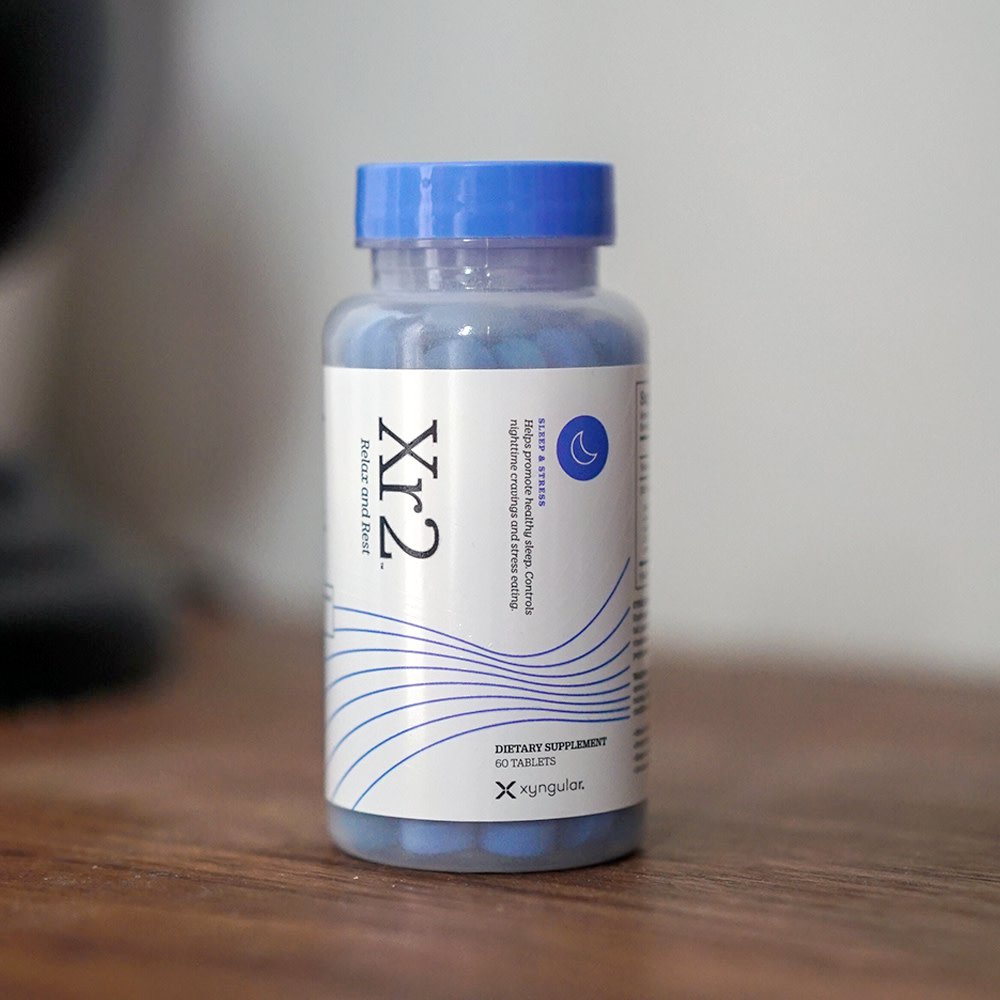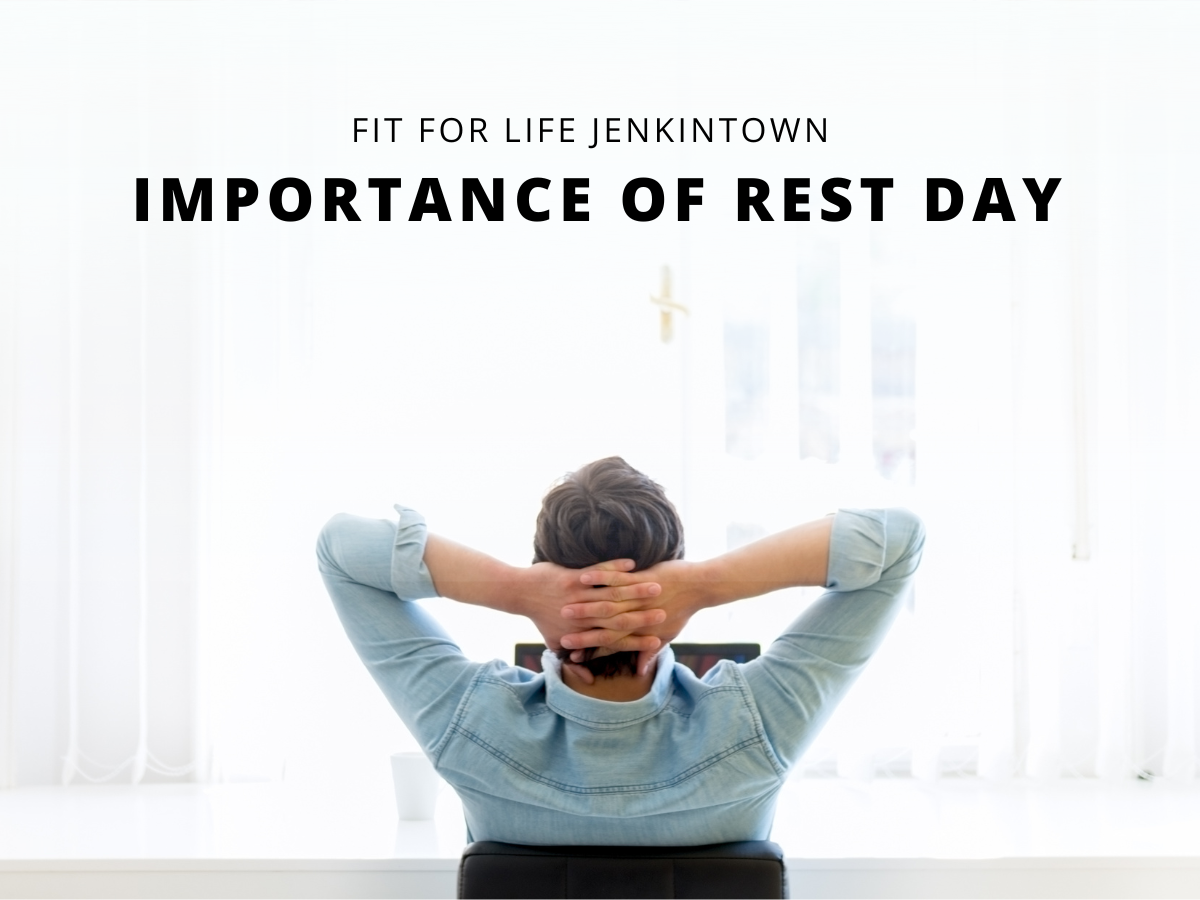
The Art of Doing Nothing Know Why Your Brain Thrives on Lazy Days
The art of doing nothing know why your brain thrives on lazy days – The Art of Doing Nothing: Know Why Your Brain Thrives on Lazy Days – it sounds almost rebellious, doesn’t it? To actively embrace laziness? But what if I told you that those seemingly unproductive days are actually crucial for your brain’s health and well-being? This isn’t about being perpetually idle, but rather strategically incorporating periods of rest to unlock your brain’s incredible potential for creativity, productivity, and overall happiness.
We’ll delve into the science behind why downtime is so important, and how you can cultivate the art of doing nothing to live a more fulfilling life.
We’ll explore the neurological benefits of rest, examining how your brain repairs and consolidates memories during periods of inactivity. We’ll uncover the surprising link between downtime and creativity, showing how those moments of “mind wandering” can spark innovative ideas. We’ll also look at the impact of rest on your physical health, and how sufficient sleep strengthens your immune system.
Finally, we’ll discuss practical strategies for incorporating more rest into your daily routine and discover how embracing the art of doing nothing can actually make you
-more* productive.
The Neurological Benefits of Rest
Rest isn’t just about feeling refreshed; it’s a crucial process that allows our brains to function optimally. During periods of inactivity, the brain engages in vital restorative processes that are essential for cognitive health, emotional well-being, and overall performance. Ignoring the need for rest can lead to burnout, impaired cognitive function, and increased susceptibility to illness.
The brain’s restorative processes during rest are multifaceted. While we sleep, for example, glial cells, which support and protect neurons, remove metabolic waste products that accumulate during wakefulness. This “cleaning” process is crucial for maintaining optimal neuronal function and preventing the buildup of toxins that can impair cognitive performance. Furthermore, periods of quiet wakefulness allow for the consolidation of memories, the strengthening of neural connections, and the integration of new information learned throughout the day.
This process involves the transfer of information from the hippocampus, a brain region crucial for memory formation, to the neocortex for long-term storage.
Sleep’s Role in Cognitive Function and Memory Consolidation
Sleep is not merely a period of inactivity; it’s a highly active and dynamic state during which the brain performs essential tasks vital for cognitive function and memory consolidation. During different sleep stages, the brain engages in different processes. For example, during slow-wave sleep, the brain consolidates procedural memories (like riding a bike) and restores energy levels. REM (Rapid Eye Movement) sleep, on the other hand, is crucial for consolidating declarative memories (like facts and events) and emotional processing.
Sleep deprivation significantly impairs cognitive functions such as attention, memory, and decision-making, highlighting the critical role of sleep in optimal brain function. Studies have shown that even a single night of sleep deprivation can lead to measurable deficits in cognitive performance, impacting reaction time, accuracy, and overall cognitive efficiency.
Reduced Stress Hormones and Improved Mental Clarity
Periods of rest significantly reduce the levels of stress hormones like cortisol in the body. Elevated cortisol levels, often associated with chronic stress, impair cognitive function by interfering with memory consolidation, attention, and decision-making. Rest allows the body to regulate cortisol levels, leading to improved mental clarity, reduced anxiety, and enhanced cognitive performance. For instance, taking a break during a stressful workday can help to lower cortisol levels, leading to a more focused and productive afternoon.
Similarly, regular vacations and periods of relaxation can help mitigate the long-term effects of chronic stress on cognitive function, resulting in improved mental well-being and overall health.
Brain Activity During Work Versus Rest
The brain’s activity differs dramatically between periods of intense work and periods of rest. During intense work, specific brain regions related to the task at hand show increased activity, often accompanied by increased metabolic demands. This heightened activity can lead to mental fatigue and reduced efficiency if sustained for extended periods. In contrast, during rest, brain activity shifts towards more diffuse patterns, allowing for restorative processes like memory consolidation and metabolic cleanup.
Neuroimaging studies reveal decreased activity in task-specific regions and increased activity in areas associated with self-reflection and mind-wandering during rest. This shift allows the brain to recover from the demands of focused activity and prepare for future cognitive tasks. This difference is analogous to a computer needing downtime to defragment its hard drive and optimize performance.
Creativity and the Power of Downtime
We often equate productivity with constant activity, believing that relentless work is the key to unlocking our creative potential. However, a growing body of research suggests the opposite: true creativity often flourishes during periods of inactivity and rest. Our brains, it turns out, are remarkably adept at processing information and generating novel ideas when we give them a break from the demands of focused attention.Downtime allows our minds to wander, a process that’s surprisingly crucial for innovative thinking.
Instead of being constrained by the logical, linear processes we employ during focused work, our minds are free to explore connections and possibilities that might otherwise remain hidden. This “mind wandering” isn’t simply idle daydreaming; it’s a dynamic mental state where different parts of the brain interact in new and unexpected ways, fostering the emergence of creative insights.
Mind Wandering and Innovative Problem Solving
A break from focused work can significantly enhance problem-solving abilities. Imagine a scientist struggling with a complex research problem. Days spent poring over data yield little progress. However, during a leisurely walk in the park, a seemingly unrelated observation – the intricate pattern of sunlight filtering through leaves – sparks an analogy that unlocks a crucial insight into the research problem.
The relaxed state of mind, free from the pressure of immediate results, allows for a more flexible and associative thought process. This demonstrates how seemingly unproductive downtime can lead to breakthroughs.
Examples of Creative Individuals Utilizing Rest
Many famous creative individuals have understood and harnessed the power of rest. Albert Einstein, known for his revolutionary theories in physics, famously emphasized the importance of daydreaming and reflection in his creative process. He often retreated to quiet contemplation, allowing his mind to freely explore ideas, leading to groundbreaking discoveries. Similarly, many writers, artists, and composers have described the role of periods of rest and relaxation in inspiring their most creative work.
These individuals intuitively recognized the value of downtime, allowing their subconscious minds to work on problems while they were consciously engaged in other activities. The conscious mind might be resting, but the subconscious is busy making connections and generating novel ideas.
The Impact of Rest on Physical Health

Source: xyngular.com
Rest isn’t just about feeling refreshed; it’s a fundamental pillar of physical health, impacting everything from our immune function to our susceptibility to chronic diseases. Adequate rest allows our bodies to repair and rejuvenate, strengthening our defenses and bolstering our overall well-being. Neglecting this crucial need, however, can have far-reaching and detrimental consequences.
The Relationship Between Rest and Immune System Strengthening
Sufficient sleep and rest play a vital role in strengthening the immune system. During sleep, our bodies release cytokines, proteins that act as messengers between cells and are crucial for fighting inflammation and infection. A lack of sleep suppresses the production of these cytokines, leaving us more vulnerable to illness. Studies have consistently shown a correlation between sleep deprivation and increased susceptibility to infections like the common cold.
Furthermore, adequate rest allows our bodies to efficiently repair damaged cells and tissues, a process essential for maintaining a robust immune response. This restorative process is significantly impaired during periods of chronic sleep deficiency.
The Effects of Chronic Sleep Deprivation on Physical Health, The art of doing nothing know why your brain thrives on lazy days
Chronic sleep deprivation, defined as consistently getting less than the recommended amount of sleep (generally 7-9 hours for adults), has profound negative effects on physical health. It increases the risk of developing numerous chronic conditions, including cardiovascular disease, type 2 diabetes, obesity, and certain types of cancer. Sleep deprivation disrupts hormonal balance, leading to increased levels of cortisol (the stress hormone), which can contribute to weight gain, insulin resistance, and inflammation.
Moreover, it impairs cognitive function, leading to reduced concentration, impaired decision-making, and increased risk of accidents. The cumulative effect of these factors significantly diminishes overall well-being and quality of life.
Comparison of Sleep Deprivation Symptoms and the Benefits of Sufficient Rest
| Symptom of Sleep Deprivation | Benefit of Sufficient Rest | Symptom of Sleep Deprivation | Benefit of Sufficient Rest |
|---|---|---|---|
| Increased risk of infection | Strengthened immune system | Weight gain/obesity | Improved metabolic function and weight management |
| Impaired cognitive function | Improved concentration and cognitive performance | Increased blood pressure | Reduced risk of cardiovascular disease |
| Irritability and mood swings | Improved mood and emotional regulation | Chronic fatigue | Increased energy levels and reduced fatigue |
| Increased risk of accidents | Improved reaction time and alertness | Weakened bones and muscles | Enhanced muscle repair and bone density |
Strategies for Incorporating More Rest into a Daily Routine
Prioritizing rest requires a conscious effort and the implementation of practical strategies. Creating a consistent sleep schedule, even on weekends, helps regulate the body’s natural sleep-wake cycle. Establishing a relaxing bedtime routine, such as taking a warm bath or reading a book, can signal to the brain that it’s time to wind down. Optimizing the sleep environment by ensuring the bedroom is dark, quiet, and cool is also crucial.
Furthermore, regular physical activity, a balanced diet, and limiting caffeine and alcohol intake contribute to better sleep quality. Finally, consciously scheduling downtime throughout the day, even short breaks for mindfulness or relaxation, can significantly reduce stress and improve overall well-being.
Mindfulness and the Art of Doing Nothing
The concept of “doing nothing” often clashes with our productivity-driven culture. However, embracing periods of inactivity, infused with mindfulness, can be profoundly beneficial for our mental and physical well-being. Mindful rest isn’t about being idle; it’s about intentionally choosing stillness and observing our inner landscape without judgment. It’s a powerful tool for cultivating self-awareness and reducing the mental chatter that often dominates our lives.
A Guided Meditation for Mindful Rest
This meditation encourages the acceptance of stillness and inactivity. Find a comfortable position, either sitting or lying down. Close your eyes gently. Bring your awareness to your breath, noticing the natural rhythm of inhalation and exhalation. Don’t try to change your breath; simply observe it.
Now, expand your awareness to your body, noticing any sensations – tingling, warmth, coolness, pressure. Acknowledge these sensations without judgment. Let your thoughts come and go like clouds in the sky; don’t try to stop them, simply observe them passing. If your mind wanders, gently guide your attention back to your breath. Repeat this process for 5-10 minutes, allowing yourself to simply be.
As you finish, take a few deep breaths and gently open your eyes.
Techniques for Quieting the Mind During Rest
Quieting a busy mind during rest requires practice and patience. Several techniques can help. Deep, slow breathing, as practiced in the meditation, is a cornerstone. Another effective method is focusing on a single sensory input, such as the sound of rain, the feeling of the sun on your skin, or the taste of a sip of water.
Body scans, where you systematically bring awareness to different parts of your body, can also help ground you in the present moment and reduce mental clutter. Finally, engaging in activities like gentle stretching or listening to calming music can create a more conducive environment for mental quietude.
Benefits of Mindfulness During Inactivity
Incorporating mindfulness into periods of inactivity offers numerous benefits. It reduces stress and anxiety by shifting focus from racing thoughts to the present moment. It enhances self-awareness, allowing you to better understand your thoughts, emotions, and bodily sensations. This increased self-awareness can lead to improved emotional regulation and a greater sense of inner peace. Mindful rest also promotes better sleep, as it helps calm the nervous system and prepare the body for rest.
Finally, it can foster creativity by allowing the mind to wander freely and make unexpected connections.
Navigating Sensations and Thoughts During Mindful Rest
During mindful rest, various sensations and thoughts may arise. You might experience physical discomfort, such as muscle tension or restlessness. You might also encounter intrusive thoughts, worries, or memories. The key is to observe these sensations and thoughts without judgment or resistance. Acknowledge their presence, and gently redirect your attention back to your breath or chosen focus point.
Remember that these experiences are normal and part of the process. By accepting them without struggle, you create space for stillness and allow your mind to settle.
Productivity and the Paradox of Rest

Source: fitforlifejenkintown.com
We often equate productivity with relentless activity, believing that more hours spent working equals more achieved. However, this perspective overlooks a crucial element: the power of rest. Strategic inactivity isn’t the opposite of productivity; it’s a vital component, a necessary ingredient for unlocking peak performance and sustained output. The truth is, doing less can often lead to achieving significantly more.The secret lies in understanding how our brains and bodies operate.
We aren’t designed for continuous, uninterrupted work. Instead, we function optimally through cycles of activity and rest, a concept intimately tied to our natural ultradian rhythms.
Ultradian Rhythms and Their Influence on Performance
Ultradian rhythms are natural biological cycles that occur throughout the day, typically lasting 90-120 minutes. These cycles influence our energy levels, focus, and cognitive function. During the active phase of an ultradian rhythm, we experience peak concentration and productivity. However, this is followed by a natural dip in energy and focus, a period where our brain begins to process information and consolidate learning.
Ignoring these natural rhythms and pushing through this natural dip leads to diminished returns, increased stress, and ultimately, reduced overall productivity. For example, a student cramming for an exam all night will likely retain less information than a student who studies in focused bursts interspersed with short breaks.
Visual Representation of Work and Rest Cycles
Imagine a graph. The X-axis represents time, and the Y-axis represents energy levels and focus. The graph would show a series of waves, each wave representing a single ultradian rhythm. Each wave peaks at a point of high energy and focus, followed by a trough where energy and focus dip. Ideally, work periods should align with the peak of each wave, and rest periods should coincide with the troughs.
This cyclical pattern, properly managed, ensures consistent high performance without burnout. The waves are not perfectly uniform; some peaks may be higher than others, reflecting natural variations in energy levels throughout the day.
The Counterintuitive Benefits of Doing Less
The counterintuitive benefit of strategically incorporating rest is immense. By embracing periods of inactivity, we allow our brains to process information, consolidate memories, and generate new ideas. This is where true creativity flourishes. Think of it like a computer; continuous operation without regular restarts can lead to system slowdowns and errors. Similarly, our brains need regular downtime to optimize performance.
Numerous studies have shown that regular breaks increase cognitive function, reduce stress, and improve overall well-being, ultimately leading to increased productivity in the long run. Taking short breaks throughout the day, engaging in relaxing activities, and ensuring adequate sleep are crucial for maximizing the benefits of this natural rhythm. The result is not just increased productivity, but also improved mental and physical health.
Conclusion
So, the next time you feel guilty about taking a break, remember the power of doing nothing. It’s not laziness; it’s a strategic investment in your mental and physical well-being. By consciously incorporating rest into your life – whether it’s a short meditation, a relaxing walk, or a full day of doing absolutely nothing – you’ll be amazed at the positive impact it has on your creativity, productivity, and overall sense of well-being.
Embrace the art of doing nothing; your brain will thank you for it.
FAQ Compilation: The Art Of Doing Nothing Know Why Your Brain Thrives On Lazy Days
What’s the difference between rest and relaxation?
Rest is about allowing your body and mind to recover from activity. Relaxation is a specific type of rest focused on reducing stress and tension.
How much rest do I actually need?
Most adults need 7-9 hours of sleep per night. Beyond sleep, incorporating regular breaks throughout the day is also essential.
What if I find it hard to “do nothing”?
Start small! Try 5-10 minutes of mindful breathing or simply sitting quietly. Gradually increase the duration as you become more comfortable.
Is it okay to feel unproductive during rest periods?
Absolutely! The purpose of rest is to recharge, not to constantly achieve. Feeling unproductive during rest is a sign that your body and mind are recovering.
